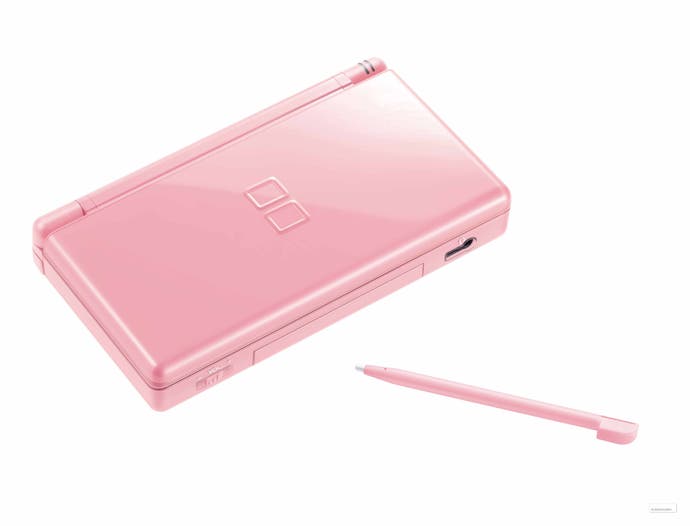Retrospective: Nintendo's Handheld Legacy
From Game & Watch to the DSi.
DS Lite
The DS may have made significant in-roads, but it was probably the magical pairing of lifestyle software with the pearly, Apple-style surfaces of the DS Lite that powered the unit into so many homes. The original DS had basically the same features as the Lite - the Lite's screen was a little better - but it still looked like a gaming device: sharp-edged, metallic, and probably awkward with women.
The DS Lite looked like it might contain futuristic cigars, or make-up, or it might be a peculiarly sexy strain of PDA. You could look cool on the train playing it - or at least you could say that you did - and it offered just enough improvements, more than enough if you consider the form factor, to convince people to upgrade - probably doing Nintendo's bidding in the process by palming off the old DS on younger siblings, who would then go out and buy even more games. It was a bizarre, style-driven pyramid scheme, essentially.

Released in 2006, the DS Lite is already inching towards its 90-millionth sale, driven on by ever-green titles like New Super Mario Bros. and Mario Kart DS, but while receipts have refused to tale off, and week-on-week, month-on-month, it's continued to make Sony's decent PSP figures look miserably inadequate, Nintendo's iteration monkeys were already back in the lab come 2007, getting things together for a much more elaborate upgrade.
DSi
The DSi was the point that Nintendo's handheld consoles embraced the internet: while you could get a surfer cartridge for the previous models, the DSi has a browser built in, allowing you read Eurogamer wherever Wi-Fi access can be found, and look through Nintendo's brand new online store where you can download DSiWare titles.
Other additions include twin cameras, both rather lame, but ideally suited to taking stupid pictures of your friends and then turning them into kaleidoscopic messes, a little onboard memory and a slot for SD cards. The form factor changed somewhat too: for my money, I really like the new matte finish, but I find the d-pad rather wobbly and ineffective at times.
People moaned about the runty cameras, and the absence of a GBA slot, possibly closing the door on the Game Boy generation forever, but it's actually just the world-beating spirit of Gunpei Yokoi at it again: taking the lowliest, cheapest, most profitable technology, and figuring out how to make it fun, while allowing competitors to run aground on more expensive alternatives.

For all its strange quirks, the DS, in all its forms, is perhaps the most fitting of spiritual torchbearers for Nintendo's handheld lineage after all: the PSP may be slightly less powerful than a PS2, but the N64-levels of performance the DS packs is perfectly acceptable for Nintendo and the kind of audience it's going after, while the rest of its features - none of them stand-outs in their own right - come together to create one of the most playful devices yet invented.
With the arrival of the new DSi LL - this one with slightly bigger screens - and yet another instalment heavily rumoured to be in the pipeline with a focus on full-time internet connectivity, it's clear that Nintendo's frustrating tendency for regular iteration isn't going away.
What is possibly changing, however, is the marketplace. Insubstantial as its games are, the iPhone is increasingly a competitor to watch out for: it will never match its rivals point-for-point, but it's already proved capable of rearranging the sales landscape to suit its own peculiar strengths.
And that's a strategy, inevitably, that Nintendo should already be fairly familiar with.
Watch out for our hands-on impressions of the new Nintendo DSi LL as soon as postie hooks us up yo.

.png?width=291&height=164&fit=crop&quality=80&format=jpg&auto=webp)






